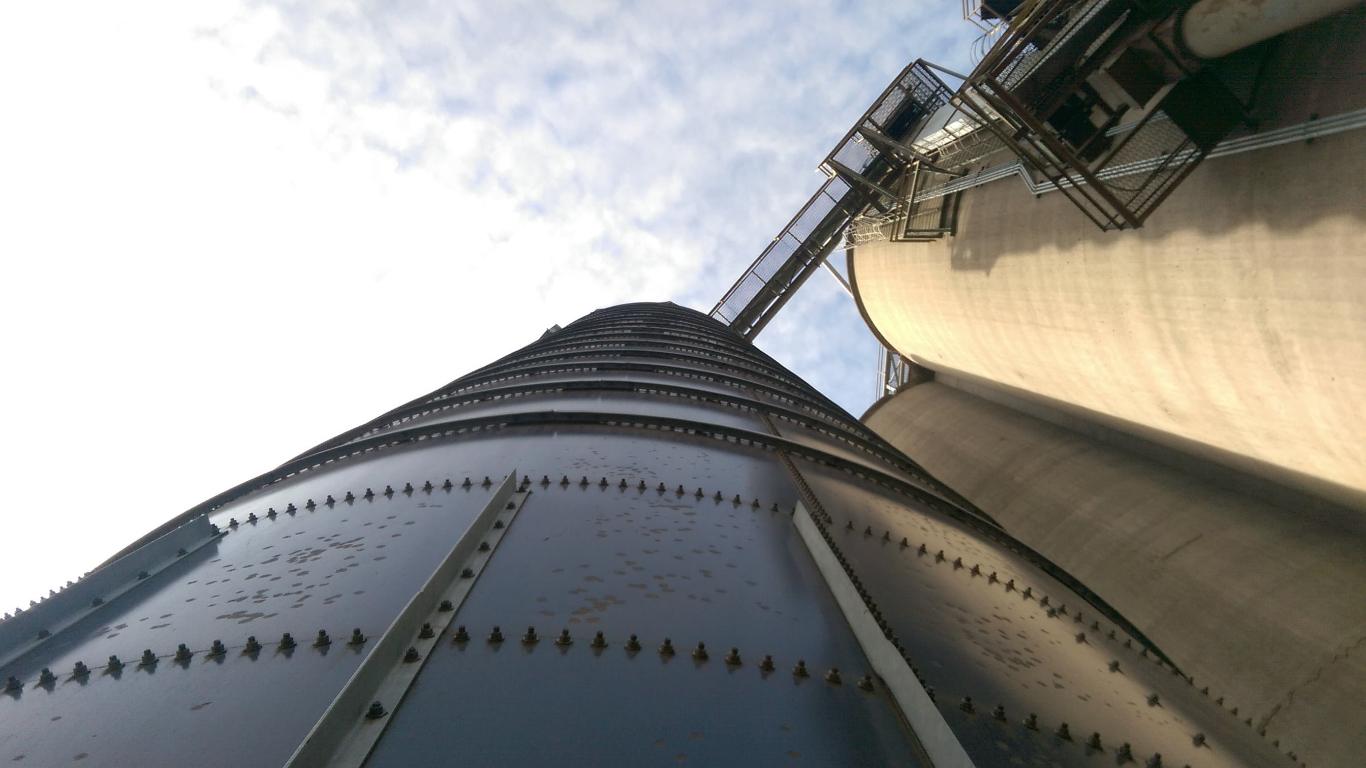Understanding Silicon Steel
Silicon steel, also known as electrical steel, is a type of specialty steel made by alloying silicon with iron. This composition is primarily designed to provide specific magnetic properties essential for the manufacturing of electrical components. By integrating silicon into the steel alloy, manufacturers achieve improved performance in terms of magnetic permeability and electrical resistivity, making it ideal for various electromagnetic applications. The inclusion of silicon enhances the steel’s ability to reduce energy loss, also known as core loss, during the operation of electrical devices.
Definition and Composition of Silicon Steel
Silicon steel typically contains around 0.5% to 5% silicon, depending on its intended application and required properties. The addition of silicon to steel increases its electrical resistivity, which helps to minimize eddy current losses in electrical applications. These losses are a common issue in electrical devices and components that operate under alternating current (AC). Moreover, silicon steel can exhibit controlled anisotropy, meaning its magnetic properties can be optimized in preferred orientations, thereby enhancing its efficiency in specific use cases.
History and Development
The development of silicon steel can be traced back to the early 20th century, a period marked by rapid advancements in electrical engineering and magnetism. Initially, the necessity for more efficient and reliable transformers and motors spurred the invention of silicon steel. Over the decades, technological progress and extensive research have further refined its properties and manufacturing process. Today, silicon steel continues to play a crucial role in the evolution of modern electrical and electronic industries, contributing significantly to higher efficiency and performance standards.
Importance in Modern Industry
In the contemporary industrial landscape, silicon steel is indispensable owing to its unique magnetic characteristics. Its significance spans various sectors including the electricity, automotive, and renewable energy industries. In electrical engineering, silicon steel is essential for crafting efficient transformers, inductors, and other components that effectively channel and regulate electrical energy. In the automotive industry, silicon steel is vital for the development of advanced electric vehicles (EVs), where it is used in motors and other essential parts. Additionally, as the world transitions towards greener energy solutions, silicon steel becomes critical for improving the efficiency of wind turbines and solar panels.
Types of Silicon Steel
The market for silicon steel features two primary types: Grain-Oriented (GO) and Non-Grain-Oriented (NGO) silicon steel. Each type is suited to different applications and offers unique characteristics that make it effective for specific purposes.
Grain-Oriented Silicon Steel
Grain-oriented silicon steel is a specialty product, designed such that the grain structure of the sheets is aligned in a specific direction. This alignment significantly enhances magnetic properties in that particular orientation.
Characteristics
One of the standout characteristics of grain-oriented silicon steel is its high magnetic permeability along the grain direction. This alignment helps reduce hysteresis loss, rendering it highly efficient. Additionally, this type of silicon steel usually contains higher silicon content, enhancing its resistance to alternating magnetic fields. The controlled grain structure also results in lower core losses, which is crucial for energy efficiency in high-demand applications.
Applications
Grain-oriented silicon steel is predominantly used in the cores of transformers, which require materials with superior magnetic properties to efficiently channel and transform electrical energy. It is also employed in various high-performance electrical devices, owing to its energy-saving characteristics. In large industrial applications that operate under constant voltage, grain-oriented silicon steel ensures efficient performance and prolonged equipment lifespan.
Non-Grain-Oriented Silicon Steel
Non-grain-oriented silicon steel, as the name suggests, does not have a defined grain structure orientation. This allows it to possess relatively uniform magnetic properties in all directions.
Characteristics
Non-grain-oriented silicon steel is often more versatile than its grain-oriented counterpart. It features a balanced blend of magnetic properties, making it suitable for a variety of applications that demand reliable and consistent performance across different directions of magnetic flux. Additionally, non-grain-oriented silicon steel is relatively easier to manufacture, and it generally comes at a lower cost, making it accessible for a broader range of industrial purposes.
Applications
Owing to its balanced characteristics, non-grain-oriented silicon steel is commonly used in electric motors, generators, and other rotating machines where the direction of magnetic flow varies. It is also employed in a wide array of smaller, yet vital components in numerous electrical devices. The use of non-grain-oriented silicon steel ensures these devices achieve reliable performance and longevity while maintaining cost-efficiency.
Manufacturing Process of Silicon Steel
The manufacturing process of silicon steel involves several meticulous steps to ensure the final product exhibits desirable properties. From the selection of raw materials to the refining process, each phase is crucial in determining the quality and performance of the silicon steel.
Raw Material Selection
The first step in the production of silicon steel involves the careful selection of raw materials. The primary raw materials include high-purity iron ore and silicon. The purity of these raw materials is paramount as impurities can significantly affect the magnetic properties and overall performance of the silicon steel. Ensuring high-quality raw materials sets the foundation for achieving optimal electrical and magnetic characteristics in the finished product.
Melting and Refining Process
Once the raw materials are selected, they undergo melting and refining. This process usually takes place in an electric arc furnace, where the materials are melted under controlled conditions. The molten mixture is then refined to remove any remaining impurities, a critical step to enhance the steel’s magnetic properties. The precise addition of silicon at this stage ensures the desired alloy composition is achieved. Proper control over the temperature and atmosphere during melting and refining directly impacts the efficacy and consistency of the silicon steel produced.
Hot and Cold Rolling Techniques
After refining, the molten steel is cast into slabs and then subjected to hot rolling. Hot rolling helps in achieving the preliminary shape and size of the silicon steel, while also refining the grain structure to improve its magnetic properties. Following hot rolling, the silicon steel undergoes cold rolling, a process which further reduces the thickness and enhances the structural consistency of the material. Cold rolling not only refines the mechanical properties but also aids in achieving the required surface finish, making the silicon steel suitable for intricate electrical applications.
Applications of Silicon Steel
Electrical Transformers
Silicon steel is an essential material in the construction of electrical transformers. The primary function of a transformer is to convert electricity from one voltage level to another, and silicon steel is integral to this process due to its excellent magnetic properties. The material’s high magnetic permeability allows transformers to operate more efficiently, reducing energy losses. Furthermore, the reduced core losses afforded by silicon steel help to minimize heat generation, which is crucial for long-term durability and performance. As a result, most modern transformers employ grain-oriented silicon steel in their cores to optimize performance and energy efficiency.
Motors and Generators
Electric motors and generators are pivotal components in both industrial and everyday applications, and silicon steel plays a vital role in their efficiency. Motors rely on the magnetic properties of silicon steel to transform electrical energy into mechanical energy. Similarly, generators use the material to convert mechanical energy back into electrical energy. The use of non-grain-oriented silicon steel in these devices provides uniform magnetic properties that are crucial for consistent operation, especially under varying loads and rotational speeds. This characteristic makes silicon steel indispensable in a multitude of applications ranging from household appliances to large industrial machinery.
Other Industrial Applications
Beyond transformers, motors, and generators, silicon steel finds applications in a broad spectrum of industrial contexts. This includes its use in inductors, relays, and other components that require efficient electromagnetic performance. The unique properties of silicon steel enable it to be molded and shaped into thin laminations, which are critical for reducing energy loss in a variety of devices. Additionally, the material’s reliability and cost-effectiveness make it a viable option for numerous other electrical and electronic components, reinforcing its importance in modern manufacturing and technology sectors.
Advantages of Using Silicon Steel
High Magnetic Permeability
One of the primary advantages of silicon steel is its high magnetic permeability, which enhances its ability to conduct magnetic fields efficiently. This property is particularly important in the core construction of transformers, motors, and generators, where minimal energy loss is crucial. Silicon steel’s high permeability means that it can support stronger magnetic fields without becoming saturated. This efficiency translates to better performance and reduced operational costs, making silicon steel an attractive option for high-performance electrical applications.
Low Core Losses
Silicon steel is engineered to exhibit low core losses, which include both hysteresis and eddy current losses. Hysteresis losses occur as the magnetic domains within the steel realign during each cycle of the AC current. Eddy current losses, on the other hand, are caused by circulating currents induced within the steel due to the changing magnetic field. The addition of silicon increases electrical resistivity, thereby reducing these eddy currents and minimizing overall core losses. Low core losses are critical for maintaining the efficiency of electrical devices, resulting in lower energy consumption and improved thermal management.
Cost-Efficiency
In addition to its performance advantages, silicon steel is also cost-efficient, making it an economic choice for numerous industrial applications. The widespread availability of raw materials, combined with advancements in manufacturing techniques, has driven down the cost of producing high-quality silicon steel. This affordability does not come at the expense of quality; silicon steel remains a robust and reliable material for electromagnetic applications. The balance of cost and performance makes silicon steel an excellent choice for both large-scale industrial projects and smaller consumer products.
Challenges in Silicon Steel Production
Quality Control Issues
Despite its advantages, the production of silicon steel poses several challenges, particularly in quality control. Ensuring uniformity in the alloy composition, grain structure, and thickness is critical for the material’s performance. Variations can lead to inconsistencies in magnetic properties, which can negatively impact the efficiency of the final product. Precision in the manufacturing process, from melting to rolling, is essential to maintain the high standards required for silicon steel. Automated systems and rigorous testing protocols are often employed to minimize quality control issues, yet this remains a challenging aspect of production.
Environmental Impact
The environmental impact of silicon steel production is another significant challenge facing the industry. The processes involved, including mining, smelting, and rolling, are energy-intensive and contribute to greenhouse gas emissions. Moreover, the need for high-purity raw materials can lead to extensive mining operations, which have their ecological footprint. The industry is actively seeking ways to mitigate these impacts through energy-efficient technologies and sustainable practices. However, balancing industrial demand with environmental responsibility remains a complex issue that requires continuous innovation and regulatory oversight.
Future Trends in Silicon Steel Industry
Innovations in Manufacturing Processes
The future of the silicon steel industry is likely to be shaped by innovations in manufacturing processes. Advances in precision engineering, automation, and material science are expected to enhance the quality and efficiency of silicon steel production. Techniques such as laser processing and additive manufacturing hold promise for achieving even more precise control over material properties. Additionally, improvements in recycling and material recovery can help reduce waste and lower the environmental impact of production. These innovations are poised to make silicon steel an even more attractive option for high-performance applications.
Emerging Applications
As technology evolves, new applications for silicon steel are continually emerging. One notable area of potential growth is in renewable energy, where silicon steel can play a pivotal role in enhancing the efficiency of wind turbines and solar power systems. The rise of electric vehicles (EVs) also presents a significant opportunity. Silicon steel is integral to the development of high-efficiency electric motor components, contributing to longer driving ranges and better performance. Furthermore, advancements in electronics and telecommunications could introduce new uses for silicon steel, reaffirming its versatility and indispensability in modern industry.
By leveraging its unique properties and embracing innovative manufacturing techniques, silicon steel will continue to be a cornerstone of technological advancement, driving efficiency and performance in diverse industrial applications.
Qingdao Sunrise New Materials Co., Ltd. is a leader in Silicon Coil manufacturing.
Qingdao Sunrise New Materials Co., Ltd. is an international supplier of steel and non-ferrous metal raw materials. They are committed to providing customized supply solutions for steel and metal products to global users. As a one-stop supplier, they have become the preferred choice for tens of thousands of customers worldwide. They have a strong supply chain network and solid professional knowledge in the industry.
Sunrise New Materials has invested in production lines for various products such as galvanized color coating, seamless steel pipes, cold-rolled plates, fiberglass, and stainless steel. They have also established long-term cooperative relationships with large domestic and foreign steel mills, ensuring high-quality products and efficient services for their customers. Additionally, they have multiple large warehouses in major domestic ports to ensure timely delivery.
The company actively promotes the high-end transformation of steel intelligent manufacturing and focuses on building a benchmark enterprise in the industry. They aim to contribute to the development of the steel industry worldwide with their expertise and dedication.







